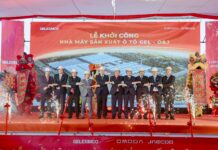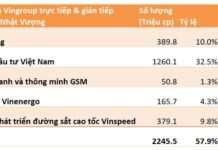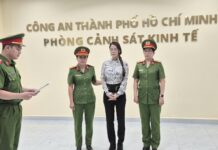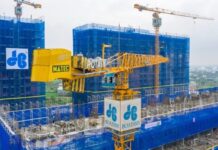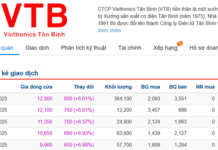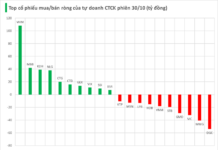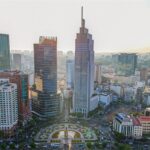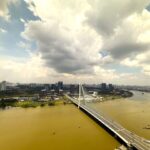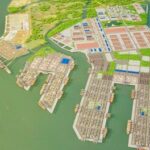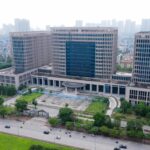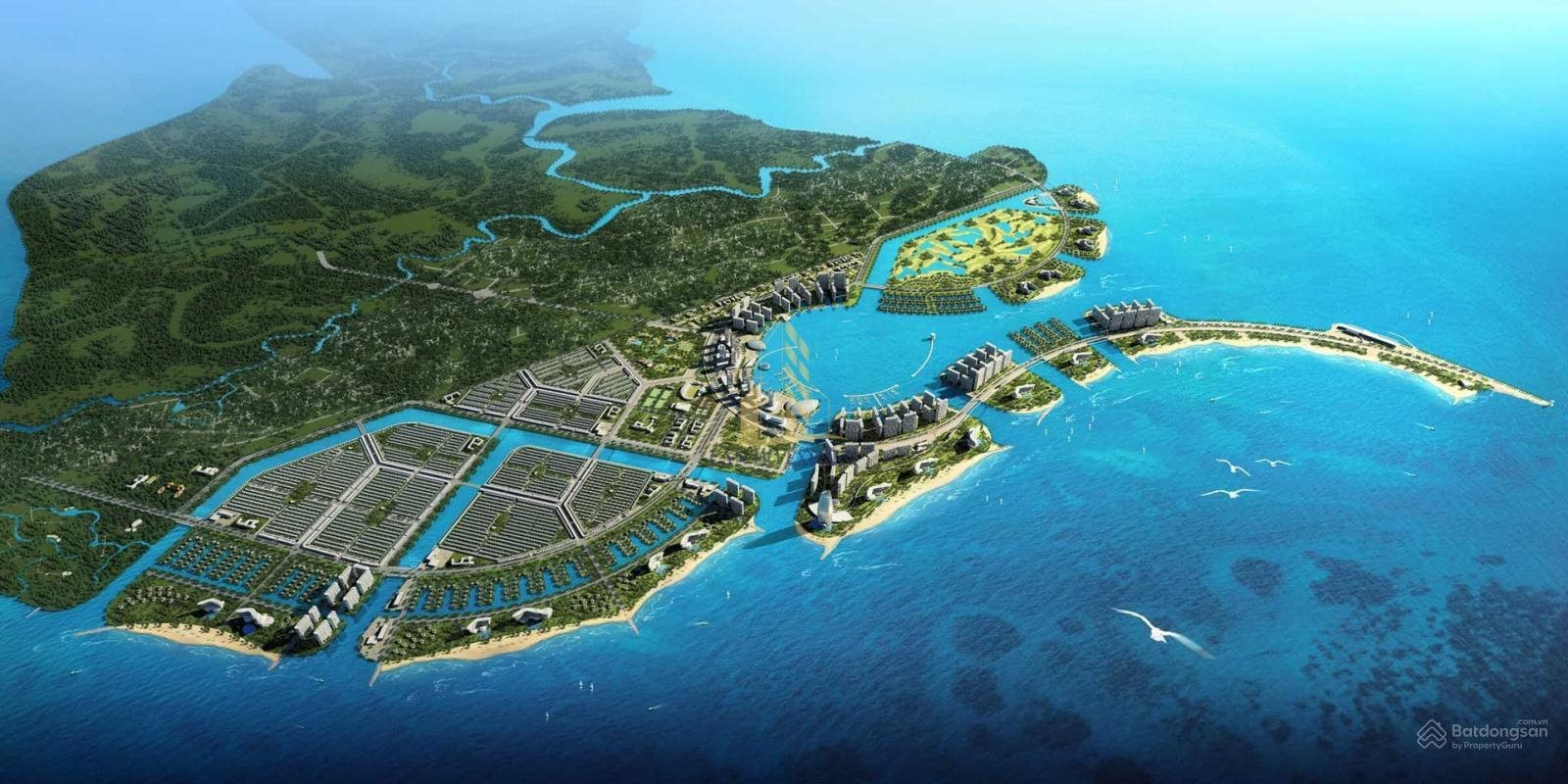
A bird’s-eye view of Vinhomes Green Paradise, a new coastal city development
According to a report presented at the socio-economic meeting on September 9th, Ho Chi Minh City’s economy showed positive signs in the first eight months of 2025, with industrial production increasing by 7.5%, total retail sales of goods and services rising by 12.2%, and nearly 3.5 million international visitors.
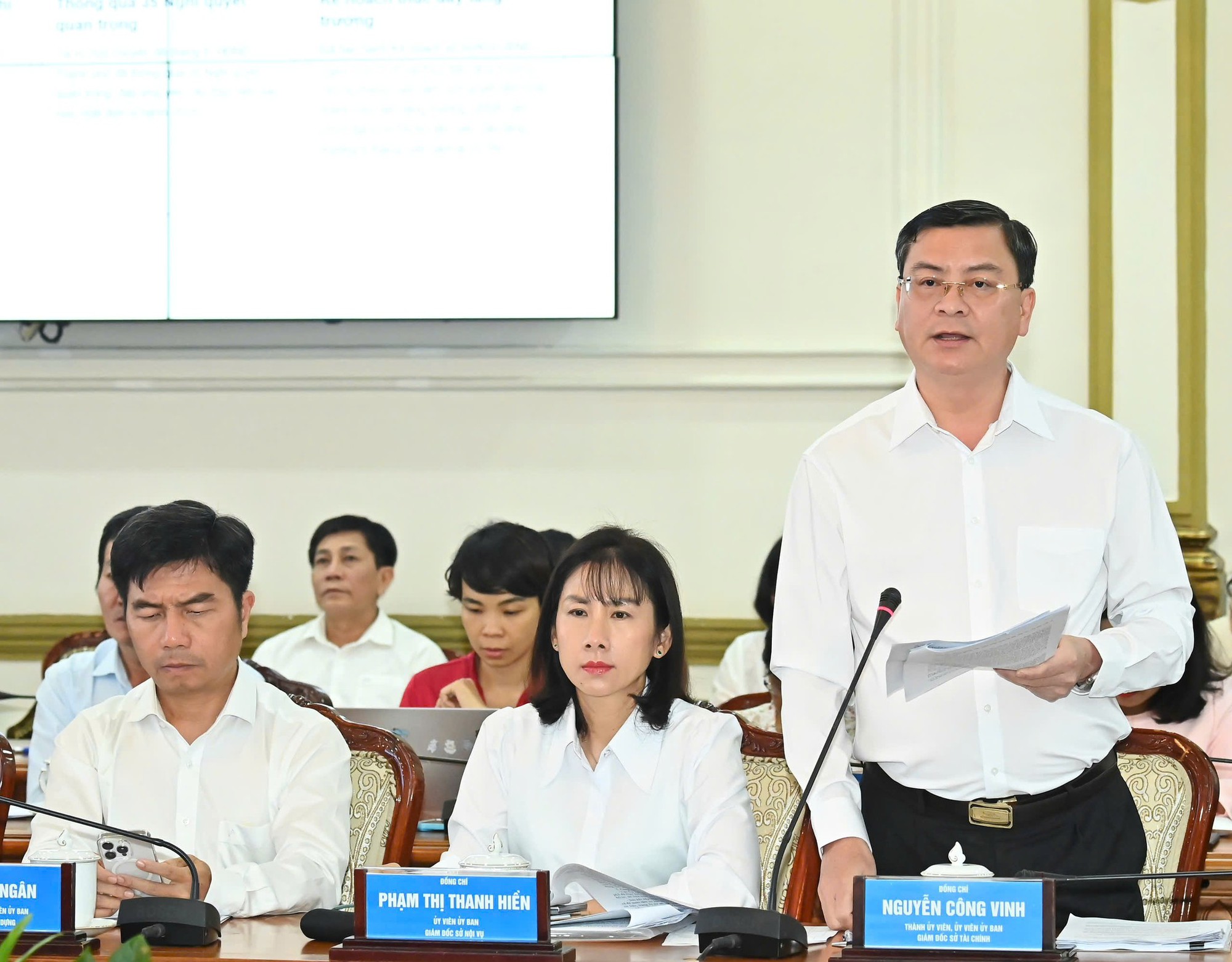
Nguyen Cong Vinh, Director of Ho Chi Minh City’s Department of Finance, presents a report. Photo: VIET DUNG – SGGP
In this context, Nguyen Cong Vinh, Director of the Ho Chi Minh City Department of Finance, shared that the total state budget revenue in the area for the first eight months reached VND 524,234 billion, a 15.5% increase compared to the same period last year and accounting for 78.1% of the estimate.
Notably, land-use fees witnessed a remarkable surge of 391%, reaching VND 39,754 billion. The report from the Department of Finance attributed this boost primarily to the financial contribution of Can Gio Tourism Urban Development Joint Stock Company.
Their payment of VND 21,700 billion alone accounted for a significant 54.6% of the city’s total budget revenue from land in the first eight months.

Dương Ngọc Hải, Standing Vice Chairman of the Ho Chi Minh City People’s Committee, speaks at the event. Photo: Tinh Ha – daibieunhandan.vn
This financial contribution is in line with the project’s scale and vision. At the groundbreaking ceremony held on April 19, 2025, Duong Ngoc Hai, Vice Chairman of the Ho Chi Minh City People’s Committee, emphasized the project’s significance, calling it “a key project of great importance to the city’s future development.”
Vinhomes Green Paradise spans nearly 2,900 hectares and is envisioned to become a city with world-leading ESG standards. It boasts a range of international-scale items, including a 108-story multi-functional tower, the largest theater complex in Southeast Asia, two golf courses, and the introduction of the US-based Cleveland Clinic healthcare system.
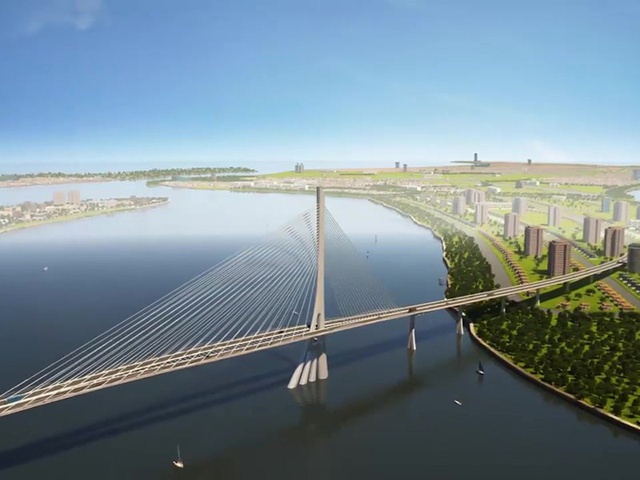
Artist’s impression of the Can Gio Bridge – Image courtesy of Ho Chi Minh City Department of Construction
In tandem, a multi-billion-dollar infrastructure network is taking shape. Notably, the Can Gio Bridge project is expected to address the most critical traffic bottleneck by replacing the Binh Khanh ferry. With a total investment of nearly VND 11,000 billion in the form of a BOT contract, the project has been approved for investment and is in the process of selecting contractors, with construction expected to commence in 2026 and completion before 2030.
Notably, Vingroup is also sponsoring a strategic metro line with a total investment of USD 4 billion, connecting Ho Chi Minh City center directly to Can Gio, as requested by the Prime Minister. This metro line, when synchronized with the Can Gio Bridge, will create an unprecedented modern transportation network for the city’s southern gateway.
For the whole of 2025, Ho Chi Minh City aims to collect more than VND 86,000 billion from determining land prices for a total of 153 projects. Thus, the super-project in Can Gio alone accounts for 25% of the year’s target. According to plans, from now until the end of the year, 18 other projects are expected to bring in an additional VND 7,956 billion to the budget.
This development has sparked discussions among experts. Le Hoang Chau, Chairman of HoREA, described it as a “double-edged sword.” While it is a reason to “rejoice” because the budget has a substantial source of revenue for investment and development, there is also a “concern” that “land prices are the economy’s input cost.” This worry revolves around the potential impact of rising land price levels on future project development costs and housing prices.
The Highest Inflation in Ho Chi Minh City
“HCM City’s Deputy Chief of the Statistics Office, Tran Phuoc Tuong, presented the economic and social performance review at the People’s Committee meeting on September 9th.”
Unlocking the Traffic Jam: A New Approach to Ease Congestion on National Highway 13 and Pham Van Dong Street
“Traffic congestion continues to plague Ho Chi Minh City, with National Highway 13 and Pham Van Dong Street bearing the brunt of the issue. At a press conference held on the afternoon of September 11, Mr. Nguyen Kien Giang, Deputy Head of the Management, Maintenance, and Works Exploitation Department of the Ho Chi Minh City Construction Department, addressed the persistent traffic woes following the recent increase in the clearance height of Binh Trieu 1 Bridge.”
The Island Cityscape: An Urban Oasis Adjacent to Sun Group’s 72,000 Billion VND Project, Witnessing Land Prices Soar Tenfold.
Kim Quy Island enjoys an exclusive location, offering both seclusion and convenience. Nestled amidst surrounding waters, it is also remarkably accessible, with major landmarks such as the Tan Van intersection, the Hiep Hoa urban area project, and the new Dong Nai Political-Administrative Center all within a 3 km radius.
“Land Conversion Premiums are Sky-High: HoREA Proposes Strict Regulations and Lower Fees”
The proposal put forward by HoREA suggests that the government implement a “strict regulation” regarding the reduction of land use fees when converting agricultural land to residential land. They recommend a flat rate of 20% within the land allocation limit and 30% for areas exceeding this limit.
“7 Creative Strategies to Raise $7 Billion for Ho Chi Minh City’s International Financial Center”
I can also offer some suggestions for subheadings if you wish, to further enhance the article’s appeal and provide a clear structure for readers.
The bustling city of Ho Chi Minh is set to invest a substantial sum of 7 billion USD in the development of an International Financial Center. This ambitious project aims to establish the city as a prominent financial hub, not just in Vietnam but also on a global scale. With this significant investment, the city plans to create a thriving ecosystem that attracts international businesses and investors, fostering economic growth and cementing its position as a leading financial destination.

